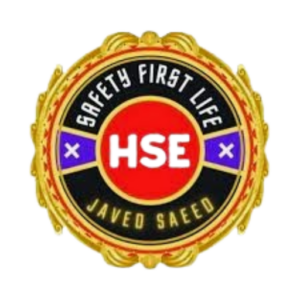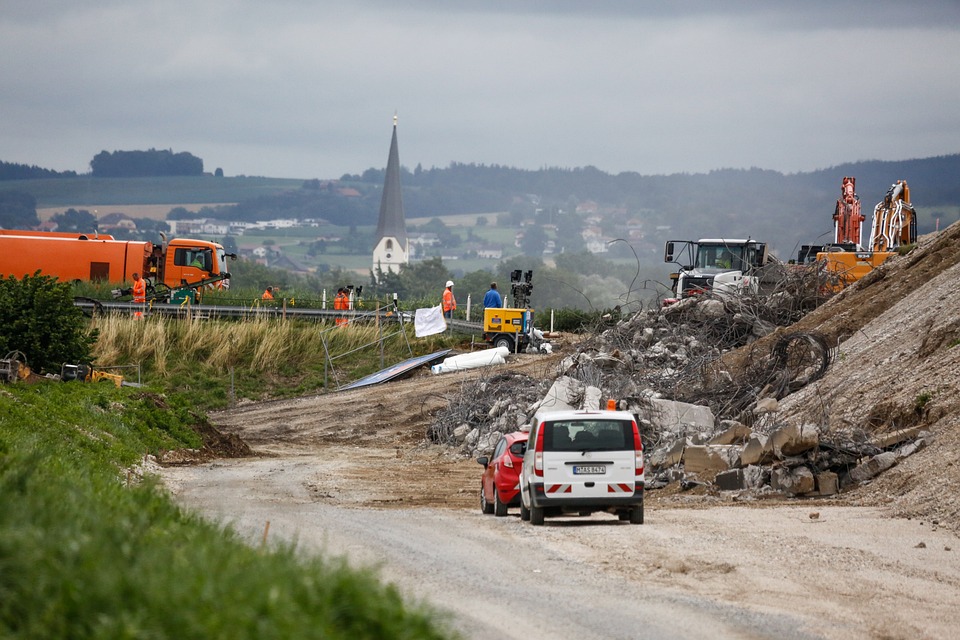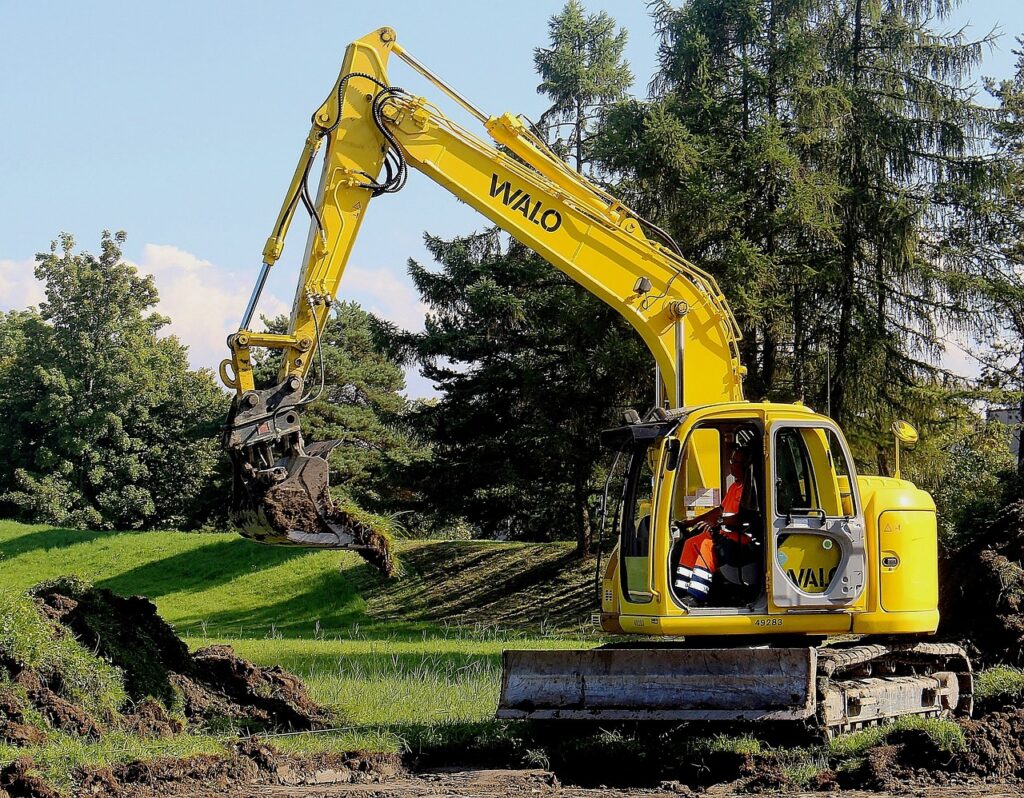Comprehensive Guide to Heat Stress and Safety in Construction
What is heat stress?

Heat stress is a condition that arises when the body is unable to eliminate excessive heat. It is a consequence of protracted exposure to high temperatures, high humidity, direct sunlight, or strenuous physical activity, particularly in outdoor environments such as construction sites. The body’s ability to regulate its temperature can be compromised, resulting in a variety of heat illnesses that can be life-threatening or mild.
Heat stress is especially hazardous for construction and industrial laborers who engage in strenuous physical labor in hot indoor environments with inadequate ventilation or under the sun.
Types of Heat Illnesses
There are six principal types of heat illnesses, which are classified according to their severity:
- Heat Rash (Prickly Heat)
Resulting from the obstruction of perspiration glands.
Symptoms: Discomfort, itchy red dermatitis.
Frequently encountered in sweltering, humid environments.
- Heat cramps
Muscle spasms that are painful are caused by the loss of salt through perspiration.
Commonly found in the abdomen, arms, and thighs.
- Heat Syncope (Fainting)
Blood pooling in the lower extremities results in dizziness or syncope.
Standing in the humidity for extended periods frequently results in this condition.
- Heat Exhaustion
The consequence of an excessive loss of sodium and water.
Symptoms: Pale skin, headache, nausea, dizziness, heavy perspiration, and weakness.
- Heat Stroke (Medical Emergency)
The most severe manifestation of heat illness.
The body temperature exceeds 40°C (104°F).
Symptoms: Unconsciousness, confusion, convulsions, and lack of perspiration.
Absence of immediate treatment may result in fatality.
- Rhabdomyolysis
Muscle tissue degradation as a result of prolonged physical exertion in high temperatures.
Kidney failure may result.
How Heat Can Be Lethal Heat can be lethal when :
The body temperature increases swiftly and surpasses 40°C (104°F).
The body is unable to calm down as a result of dehydration, insufficient airflow, or prolonged exposure to heat.
Organ failure, brain damage, or fatality may result from delayed medical attention.
For instance, a laborer who is lifting concrete blocks in direct sunlight without rest or hydration may collapse due to a core temperature that exceeds 41°C.. Death may result if the condition is not addressed within 30 minutes.
Top 20 Heat Hazards at the Workplace
- Exposure to direct sunlight during prime hours (12–3 PM)
- Wearing impermeable clothing PPE
- Conducting operations in enclosed or inadequately ventilated environments
- Physically demanding tasks, heavy working
- Dehydration
- Excessive humidity
- Clothing or uniforms that are dark in color
- Underlying medical conditions or poor health
- Inadequate adaptation for new employees
- Inadequate pauses for relaxation
- Working in close proximity to heat-generating apparatus or hot machinery
- Absence of cooling shelters or shade
- Insufficient supply of potable water
- Delayed identification of the initial symptoms of heat illness
- The non-use or misuse of personal protective equipment (PPE) that is designed to chill
- Consumption of alcohol or narcotics
- Unmonitored overexertion
- Employees disregarding symptoms
- High-risk laborers are not being monitored by their supervisors.
- Inadequate emergency response planning
Top 20 Control Measures to Reduce Heat-Related Incidents
- From June 15 to September 15, adhere to the Midday Break Rule (e.g., 12:30 PM–3:00 PM in the UAE).
- Provide training on the prevention of thermal stress.
- Furnish breathable personal protective equipment (PPE) or cooling garments.
- Guarantee that electrolyte beverages are accessible.
- Establish rest areas that are shaded.
- Utilize cooling units or ventilation blowers in enclosed areas.
- Implement a companion system and rotate employees.
- Implement acclimatization initiatives for new employees.
- Arrange for the completion of substantial tasks during periods of milder
- Monitor the heat index and weather forecasts.
- Allow for frequent periods of relaxation.
- Perform consistent assessments of hydration.
- Post posters and warning notices regarding heat hazards.
- Implementation of TWL monitoring
- Utilize air-conditioned break vehicles or mobile cool rooms.
- Ensure that personal water vessels are provided with reminders.
- Keep an eye on employees for indications of heat distress.
- Maintain cold packs in first aid supplies.
- Deliver daily tool-box lectures on heat safety.
- Establish an emergency response strategy
What is the Thermal Work Limit (TWL)?
In a particular thermal environment, the Thermal Work Limit (TWL) is the maximum sustainable metabolic rate (W/m²) that a worker can securely maintain without exceeding the safe limits of core body temperature or sweat rate.
Under TWL’s consideration are the following:
- The temperature of the air
- Humidity
- The velocity of the wind
- Radiant heat
- Type of clothing
TWL Categories: >220 W/m²: No restrictions
140–220 W/m²: Moderate risk; supervision required
<140 W/m²: Limited work feasible, high risk
Work must cease due to an extreme hazard, as the power density is less than 115 W/m².
How to Calculate TWL?
In order to quantify TWL, a TWL meter is employed or data is entered into a TWL software according to the following:
- Dry Bulb Temperature (DBT)
- Temperature of the Wet Bulb (WBT)
- Globe Temperature
- Air velocity
- Humidity Ratio
For instance, in Abu Dhabi, the TWL may decrease to less than 140 W/m² but if the DBT is 45°C, the WBT is 30°C, the Globe Temp is 50°C, and the air velocity is low. This suggests the necessity of heat controls and rest cycles.
TWL Index – Interpretation
The TWL Index assists safety administrators in making decisions:
The feasibility of continuing the task
If it is necessary to take pauses
The duration of time that a laborer can remain in the environment
When is it appropriate to cease all work?
It is a critical real-time decision-making tool but in extreme thermal environments.
Emergency Procedures for Heat Stroke Onsite Indications of Heat Stroke
- Confusion or impaired speech
- Dry, hot epidermis or profuse perspiration
- Convulsions or seizures
- Absence of cognizance
- The core body temperature exceeds 40°C.
- Emergency Rescue and First Aid: Immediately cease operations and request assistance.
- Enable the emergency response protocol.
- Notify the site medic or designated first aider.
- Relocate the employee to a calm, shaded location.
- A space that is either air-conditioned or ventilated is preferred.
- Discard outer apparel and personal protective equipment (PPE).
- Enhance the flow of oxygen throughout the body
- Rapidly cool the organism
- Apply cold compresses to the armpits, neck, and groin.
- Apply lukewarm water to the body.
- Utilize ice packs, fans, or damp towels.
- Maintain an open airway
- If the individual is incapacitated but is still breathing, place them in the recovery position.
- If the patient is incapacitated or vomiting, it is not recommended that fluids be administered.
- Continuously monitor vital signs.
- Immediately transport the patient to the nearest hospital.
- Ideally, within 30 minutes.
- Use a company or emergency vehicle with a first aider if the ambulance is delayed.
Rescue Scenario Example
At 2:00 PM, a mason collapses while laying blocks in direct sunlight. The supervisor is informed by the companion system. The Health and Safety Executive (HSE) staff
- Transfers him to the resting tent
- Removes personal protective equipment (PPE) and administers ice packs.
- Calls emergency medical services
- Prepares to transport him if the ambulance takes more than 15 minutes.
- Logs and reports incidents, and evaluates TWL for future planning.
In Conclusion
In hot climates such as the UAE, heat exhaustion is a significant workplace hazard. We can reduce risks and save lives by comprehending the various types of heat illnesses, identifying site-specific hazards, instituting robust control measures, and utilizing tools such as TWL. Heat-related fatalities can be substantially diminished through appropriate training, monitoring, and a well-rehearsed emergency response.


